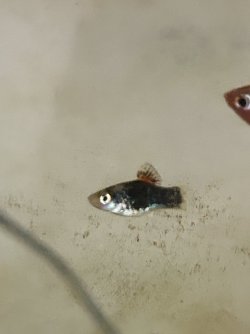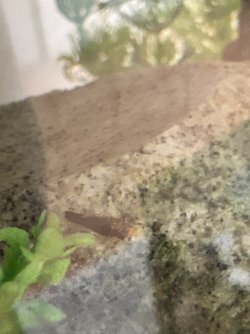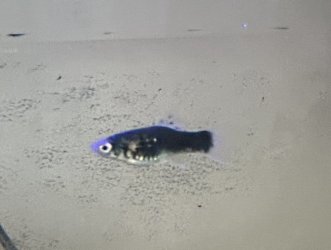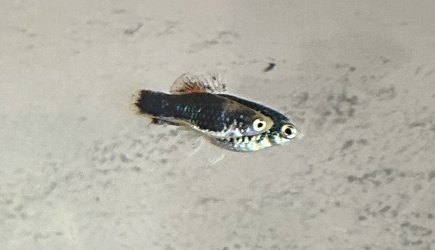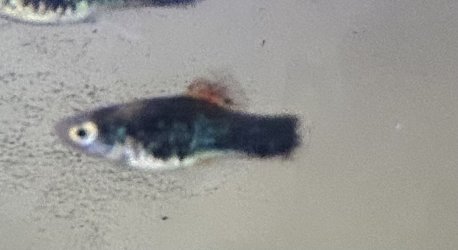Fishfishfish123
New Member
Hi,
I have a 60L tank that had 3 platies in, and they had babies of which 3 survived and are now under an inch long. Back in May (2 months ago) i noticed one of the adult female platies starting acting a lot slower but she seemed fine, she then stopped eating occasionally, and this went on for about a week until she passed away, no signs of illness aside from behaviour so i assumed it was old age (she was big when we got her so not sure on age). The second male platy that we got around the same so again unsure of age then passed away about a month after that. He seemed fine, stopped eating one day and had passed the next morning.
I then noticed a few days later that the smallest baby had a white patch across both sides of his body just behind his head (typical saddleback shape). No other symptoms he is swimming and eating as normal. I did some research but as I’m in the UK we don’t have access to many of the meds that can treat this, a fish store near me recommended interpet anti internal bacteria, i did a big water change, hoovered the gravel, dosed this and also salt (2.5tbsps). The next day i noticed a second baby has a white patch just by her gills, its tiny and barely noticeable but there on both sides. After the treatment was up I did a 30% water change without replacing the salt and replaced the carbon in the filter. It’s now been about 3 weeks since the treatment ended, there has been no change in the fish. I’ve been trying to keep the water temp down but after the recent heatwave in the UK it’s been hard (it’s at 25 currently, but hit 29 just before the suspected columnaris outbreak), water parameters are all fine and checked regularly.
I’m wondering how I can tell when the fish are treated, and if the colour will ever return? The babies are both blue and the patches look grey/ almost see through but their behaviour hasn’t changed they are acting normal. I was wanting to get a few more platies and maybe some endlers but I don’t want to introduce anything to the tank if there’s a potential they could catch something. Photos are of the male baby.
I have a 60L tank that had 3 platies in, and they had babies of which 3 survived and are now under an inch long. Back in May (2 months ago) i noticed one of the adult female platies starting acting a lot slower but she seemed fine, she then stopped eating occasionally, and this went on for about a week until she passed away, no signs of illness aside from behaviour so i assumed it was old age (she was big when we got her so not sure on age). The second male platy that we got around the same so again unsure of age then passed away about a month after that. He seemed fine, stopped eating one day and had passed the next morning.
I then noticed a few days later that the smallest baby had a white patch across both sides of his body just behind his head (typical saddleback shape). No other symptoms he is swimming and eating as normal. I did some research but as I’m in the UK we don’t have access to many of the meds that can treat this, a fish store near me recommended interpet anti internal bacteria, i did a big water change, hoovered the gravel, dosed this and also salt (2.5tbsps). The next day i noticed a second baby has a white patch just by her gills, its tiny and barely noticeable but there on both sides. After the treatment was up I did a 30% water change without replacing the salt and replaced the carbon in the filter. It’s now been about 3 weeks since the treatment ended, there has been no change in the fish. I’ve been trying to keep the water temp down but after the recent heatwave in the UK it’s been hard (it’s at 25 currently, but hit 29 just before the suspected columnaris outbreak), water parameters are all fine and checked regularly.
I’m wondering how I can tell when the fish are treated, and if the colour will ever return? The babies are both blue and the patches look grey/ almost see through but their behaviour hasn’t changed they are acting normal. I was wanting to get a few more platies and maybe some endlers but I don’t want to introduce anything to the tank if there’s a potential they could catch something. Photos are of the male baby.

